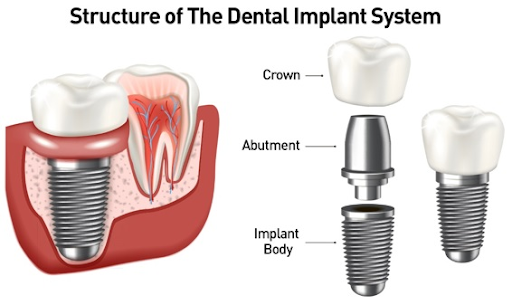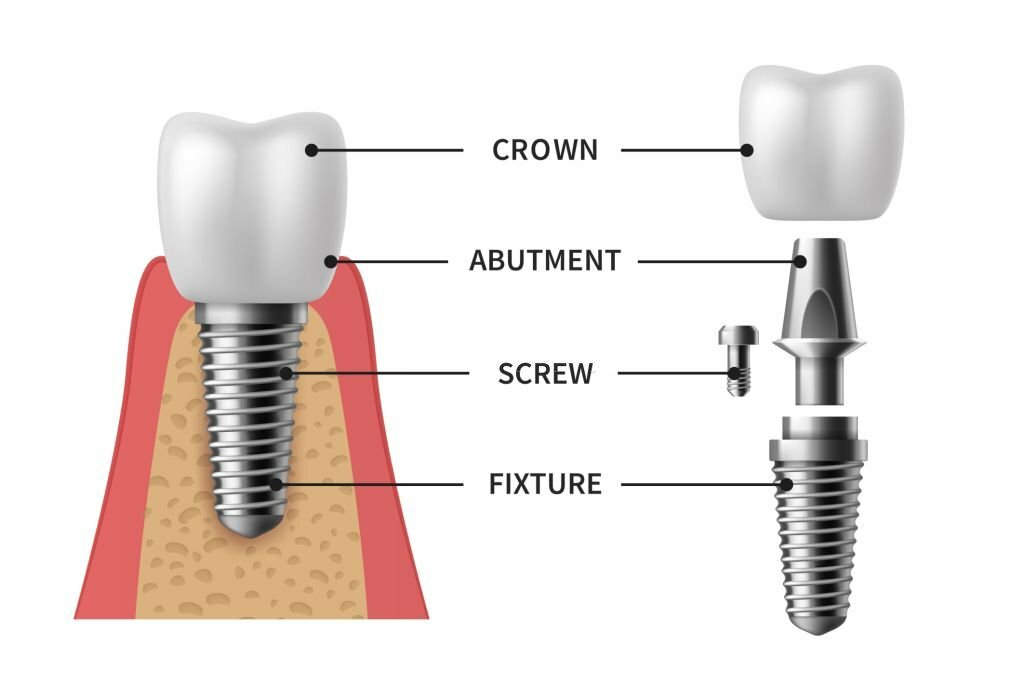Does a missing tooth or teeth bother you? Welcome to the 156+ million Americans club!
Yes, you read it right. Over 150+ million Americans have a missing tooth, lost to accident, poor oral health, or dental extraction.
But do they continue living with a lost tooth? No, it doesn’t!
In this blog, we take a closer look at:
- Introduction To Dental Implants
- Structure Of Dental Implants
- Procedure Of Dental Implants: An Insight Behind The Scene
- Before Vs. After Dental Implants: Takeaway Recommendations
Let’s understand more about the dental implant procedure in the following sections.
Introduction:
Dental implants are a great way to restore your smile.
These oral appliances are the best way to restore your smile, health, and confidence. Implants for dental are artificial teeth inserted into the jaw. They bond with the jawbone to serve as a perfect replacement for missing one or more teeth in your cavity.
However, this is just the tip of the iceberg. There’s more to dental implants, which we’ll understand in the sections below. Let’s get started.
Structure Of Dental Implants: What Does The Artificial Tooth Look Like?
Your oral cavity develops complications when you lose a tooth to an accident, injury, or disease. These complications include defective speech, rapid bone loss, or changes to chewing patterns, resulting in discomfort and difficulty eating.
However, after you approach your implantation dental expert for an artificial tooth, things are different. They introduce you to dental implants, a natural-looking artificial setting divided into three parts.

An implant denture comprises three different parts, namely:
Implant Body: The implant body, or ‘artificial root,’ is placed on the upper or lower jawbone (depending on the missing tooth). Dentists make it out of titanium to give your dentures or false teeth a natural feel.
Abutment: The abutment works like a screw that fixes onto the implant body. This is generally made of zirconia, gold, porcelain, surgical stainless steel, or titanium. It gets screwed into the implant and acts as a filler to the crown.
The abutment is your dental implant’s main adapter as it saves your crown from loosening or cracking under biting pressure, compared to simply fixing the crown into the implant.
Crown: Last on our list, we have a crown, a part of the restored tooth that mimics a natural tooth. It acts as a cap that goes onto your implant to give you a normal feeling. It’s designed to be tough and can be replaced if it cracks.
Procedure Of Dental Implants: An Insight Behind The Scene
Based on the prescription, your dentist will select two dental implant types: Endosteal and Subperiosteal.
However, none of the implants affect the procedure behind the surgery. Here’s an overview of what your dental implant procedure looks like:
Stage I: Initial Evaluation
The process of inserting dental implants starts with an initial evaluation. During this stage, your dentist or oral surgeon will examine and evaluate your oral health using X-rays.
Once they have an idea of the present condition of your jawbone, it’s time to continue planning for the tooth implant. This planning process generally includes a walkthrough of the surgery and the surgical anesthesia options.
Your oral experts can also provide a list of do’s and don’ts based on your current condition.
Stage II: During The Surgery
The second stage is probably the longest of them all. During this stage, your dentist removes the damaged tooth and prepares your jawbone for the process.
This stage of the dental implant procedure can take up to a few months, based on your jawbone and the time it takes to heal before the first installation.
Stage III: Implant Surgery & Bone Grafting
In the third stage, your dentist will examine whether your jawbone is ready to make the perfect foundation for a new implant. Your surgeon will perform bone grafting, placing a small bit of bone in your jaw to stabilize the implant placed within the jawbone.
Following the success of bone grafting, your dentist will place a temporary denture to give you a hang of the implant. It is during this stage that osseointegration takes place.
The bone begins to grow into and unite with the implant’s surface, incorporating it into the normal gumline. Depending on the time taken to heal, the procedure can take three to nine months to function like the roots of a natural tooth.
Stage IV: Placing The Abutment
Once you are comfortable with your temporary dentures and the osseointegration process is complete, it’s time for the local surgeon to install the abutment. The local surgeon will perform this procedure under anesthesia, reopening your gums to expose the temporary implant in tooth.

The local surgeon will then screw the abutment into the dental implant. After that, the local surgeon will reattach the gum tissue to the abutment and allow it to recover for one to two weeks. Later, the prosthetic tooth will be connected to the abutment.
Stage V: Fitting The New Artificial Teeth
After your gums have healed, it’s time to remodel your smile with the perfect implants. During this stage, your dentist will take impressions of your mouth and existing teeth.
These impressions are used to make permanent or temporary prosthetics, like denture implants. Depending on your choice, you can opt for removable or permanent dental implants.
Before Vs. After Dental Implants: Takeaway Recommendations
Before you opt for dental implants, consult your dentist about the possible advantages and drawbacks and if you are a candidate for the operation.
Here, we’ve covered a list of things to consider before and after a dental procedure. Let’s check it out:
Things To Consider Before Opting For Dental Implants
- Your general health will play a crucial role in determining the success of a dental implant procedure. It will also impact recovery.
- Before you settle with any implant, enquire about the model and brand of the oral appliance and record it for your future reference.
- Smoking may affect the overall healing of your implants and reduce it’s long-term success.
- Implants take several months to recover, during which your dentist will place a temporary abutment in place of the tooth.
Things To Consider After The Dental Implants Procedure
- Follow your dental provider’s oral hygiene guidelines. Cleaning the implant and adjacent teeth regularly is critical for long-term success.
- Make regular appointments with your dentist.
- Inform your dentist right away if your implant seems loose or uncomfortable.
Takeaway
- Over 156+ million Americans have one or more missing teeth.
- Your oral cavity develops complications when you lose a tooth to an accident, injury, or disease.
- Based on the prescription, your dentist will select two dental implant types: Endosteal and Subperiosteal.
- The best dental implants can last a lifetime.
- A dental implant procedure can be divided into five different stages.


